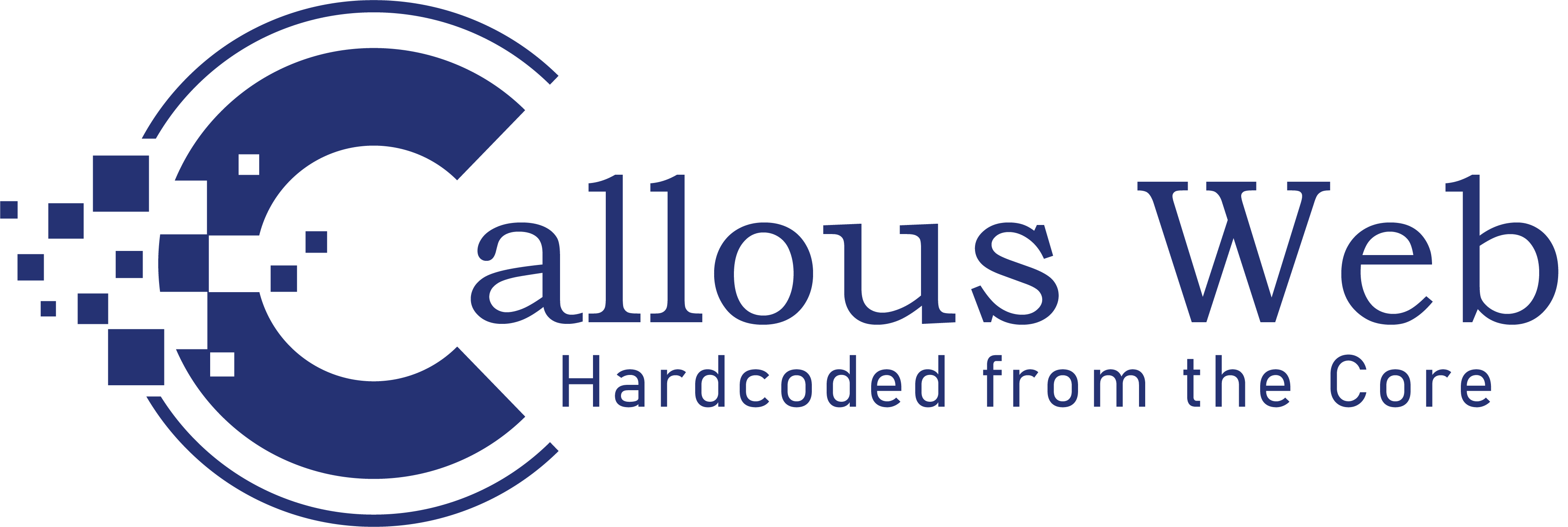Introduction to web design trends
Welcome to the exciting world of web design, where creativity meets technology in a digital dance of innovation! As we gear up for 2024, it’s time to explore the upcoming trends that will shape the way websites look and function in the coming year. From responsive designs to cutting-edge technologies like AR and AI, there’s a lot to unpack. So, fasten your seatbelts as we take a thrilling ride through the evolution of web design and what lies ahead on the horizon!
The evolution of web design over the years
Web design has come a long way since the early days of the internet. Back in the 90s, websites were basic and clunky, with flashy animations and loud colors dominating the screen. As technology advanced, so did web design trends.
The early 2000s saw the rise of more streamlined layouts and cleaner designs. With the introduction of CSS, designers had more control over how websites looked and functioned. The era of Web 2.0 brought about a focus on user-generated content and interactive interfaces.
In recent years, mobile responsiveness has become crucial as more users access websites on their smartphones and tablets. This shift towards mobile optimization has led to simpler yet intuitive designs that prioritize usability across all devices.
Looking ahead to 2024, we can expect even more emphasis on user experience, accessibility, minimalism, personalization, and integration of new technologies like AR, VR, and AI into web design practices.
Predicted web design trends for 2024
As we look ahead to 2024, the world of web design continues to evolve at a rapid pace. Anticipated trends for the upcoming year include a focus on responsive design and mobile optimization. With more users accessing websites from their smartphones and tablets, ensuring seamless functionality across all devices will be paramount.
User experience and accessibility are also expected to take center stage in 2024. Designers will prioritize creating intuitive interfaces that cater to diverse audiences, including those with disabilities. Embracing minimalism and simplicity in design is another trend on the horizon, as clean layouts and easy navigation become increasingly popular.
Personalization and customization are set to play a significant role in web design next year. Tailoring user experiences based on individual preferences can enhance engagement and foster customer loyalty. Additionally, incorporating new technologies such as AR, VR, and AI will offer exciting possibilities for creating immersive online experiences.
Businesses must adapt to these evolving trends in order to stay competitive in the digital landscape. E-commerce platforms especially stand to benefit from implementing cutting-edge design strategies that prioritize user satisfaction and engagement. By staying abreast of emerging trends and embracing innovation, companies can position themselves for success in 2024 and beyond.
Responsive design and mobile optimization
In the fast-paced digital landscape of web design, responsive design and mobile optimization have become non-negotiable elements for any successful website. With the majority of internet users now browsing on their smartphones or tablets, ensuring a seamless experience across all devices is paramount.
Responsive design allows websites to adapt fluidly to different screen sizes, providing an optimal viewing experience no matter the device being used. This approach not only enhances user satisfaction but also boosts search engine rankings as Google prioritizes mobile-friendly sites in its algorithm.
Mobile optimization goes beyond just responsiveness; it involves optimizing site speed, navigation, and content layout specifically for mobile users. By streamlining these aspects, businesses can capture and retain the attention of on-the-go consumers who expect fast-loading pages and intuitive interfaces.
In 2024 and beyond, we can expect even greater emphasis on mobile-first design strategies as the reliance on mobile devices continues to grow exponentially. Embracing responsive design and focusing on mobile optimization will be crucial for staying competitive in the ever-evolving digital realm.
User experience and accessibility
User experience and accessibility are crucial aspects of web design that can greatly impact how users interact with a website. Designing with the user in mind involves creating intuitive navigation, clear layout, and easy-to-read content. Accessibility ensures that individuals with disabilities can also access and use the website effectively.
Incorporating features like alt text for images, proper heading structures, and keyboard navigation options can make a website more inclusive to all users. Providing a seamless browsing experience regardless of device or ability is key in today’s digital landscape.
By focusing on user experience and accessibility, web designers can create websites that not only look aesthetically pleasing but also function smoothly for all visitors. Prioritizing these elements helps build trust with users and improves overall engagement on the site.
Minimalism and simplicity in design
Minimalism and simplicity in web design have been gaining popularity in recent years. This trend focuses on removing clutter and unnecessary elements, allowing the content to shine. Clean layouts, generous white space, and simple typography are key components of minimalist design.
By embracing minimalism, websites can create a more streamlined user experience that is easy to navigate and visually appealing. Minimalist designs often convey a sense of sophistication and elegance while promoting clarity and focus.
Simplicity in design doesn’t mean sacrificing creativity or personality. It’s about finding the perfect balance between aesthetics and functionality. Stripping away distractions can enhance the overall impact of a website, making it more memorable for visitors.
In 2024, we can expect to see even more websites adopting minimalist principles as designers continue to prioritize user-centric approaches. Embracing minimalism can help businesses stand out in a crowded digital landscape by delivering content that is concise, impactful, and engaging.
Personalization and customization
Personalization and customization in web design have become crucial elements in creating unique and engaging online experiences for users. By tailoring content and features to individual preferences, websites can enhance user engagement and create a more personalized connection with visitors.
In 2024, we can expect to see even more advanced methods of personalization, such as dynamic content that adapts based on user behavior and AI-driven recommendations that anticipate user needs. Customizing the user journey through personalized recommendations or interactive elements can significantly impact conversion rates.
Furthermore, incorporating customization options for users to personalize their experience, such as choosing themes or customizing layouts, can increase user satisfaction and loyalty. This trend towards personalization is not only about catering to individual preferences but also about creating a sense of exclusivity and uniqueness for each visitor.
As web designers continue to explore innovative ways to deliver personalized experiences online, it’s essential to stay updated on the latest trends and technologies in order to stand out in a competitive digital landscape.
Incorporating new technologies (AR, VR, AI)
As we look ahead to 2024, the integration of new technologies like Augmented Reality (AR), Virtual Reality (VR), and Artificial Intelligence (AI) is set to revolutionize web design. AR and VR can enhance user engagement by creating interactive and immersive experiences on websites. Imagine being able to virtually try on clothes before making a purchase or exploring a hotel room in VR before booking your stay.
AI-powered chatbots are becoming more prevalent in providing personalized customer support and streamlining communication processes. They can analyze data in real-time to offer tailored recommendations and assistance. Additionally, AI algorithms can optimize website content based on user behavior, improving overall user experience.
By incorporating these cutting-edge technologies into web design strategies, businesses can differentiate themselves from competitors and provide innovative solutions that resonate with modern consumers. It’s clear that staying abreast of these trends will be crucial for designers aiming to create impactful digital experiences in the ever-evolving online landscape.
Impact on businesses and e-commerce
The impact of web design trends on businesses and e-commerce in 2024 is significant. With the increasing focus on user experience and accessibility, companies are revamping their websites to cater to a wider audience. By incorporating responsive design and mobile optimization, businesses can ensure that their online platforms are easily accessible across various devices.
Moreover, the trend towards minimalism and simplicity in design is reshaping how brands present themselves online. Clean layouts and intuitive navigation not only enhance the user experience but also reflect a modern aesthetic that appeals to customers.
Personalization and customization play a crucial role in engaging users and fostering brand loyalty. By leveraging new technologies like AR, VR, and AI, businesses can create immersive experiences that set them apart from competitors.
Incorporating these evolving web design trends can give businesses a competitive edge in the digital landscape by improving conversion rates, boosting customer satisfaction, and ultimately driving growth.
Staying ahead of the curve: Tips for web designers
Staying ahead of the curve in web design requires constant innovation and adaptation. To keep up with the ever-changing landscape, web designers need to stay curious and open to learning new trends. It’s crucial to experiment with different techniques and tools to push boundaries and create fresh experiences for users.
Networking with other designers can provide valuable insights and inspiration. Collaborating on projects or attending industry events can help expand your perspective and keep you informed about emerging trends. Additionally, staying updated on technological advancements is key – whether it’s mastering AI integration or exploring AR/VR capabilities.
Remember that user experience should always be at the forefront of your designs. Strive to create intuitive interfaces that cater to diverse audiences while maintaining accessibility standards. Embrace minimalism but don’t shy away from incorporating unique personal touches that set your work apart.
By embracing change, honing your skills, and prioritizing user-centric design principles, you’ll be better equipped to stay ahead in the dynamic world of web design.
Conclusion
As we look ahead to 2024, the world of web design is set to continue evolving at a rapid pace. Keeping up with the latest trends and technologies will be crucial for businesses looking to stay competitive in the online space. Responsive design, user experience, minimalism, personalization, and new technologies like AR, VR, and AI will play key roles in shaping the digital landscape.
For web designers and developers, staying ahead of the curve means embracing change, continuously learning new skills, and experimenting with innovative ideas. By focusing on creating user-friendly experiences that are both visually appealing and functional across all devices, designers can help businesses stand out in a crowded online marketplace.
In this fast-paced industry, adaptability is key. By keeping an eye on emerging trends and incorporating them thoughtfully into their work, web designers can ensure that they are always one step ahead. So as we move closer to 2024, let’s embrace these exciting opportunities for growth and innovation in web design.





